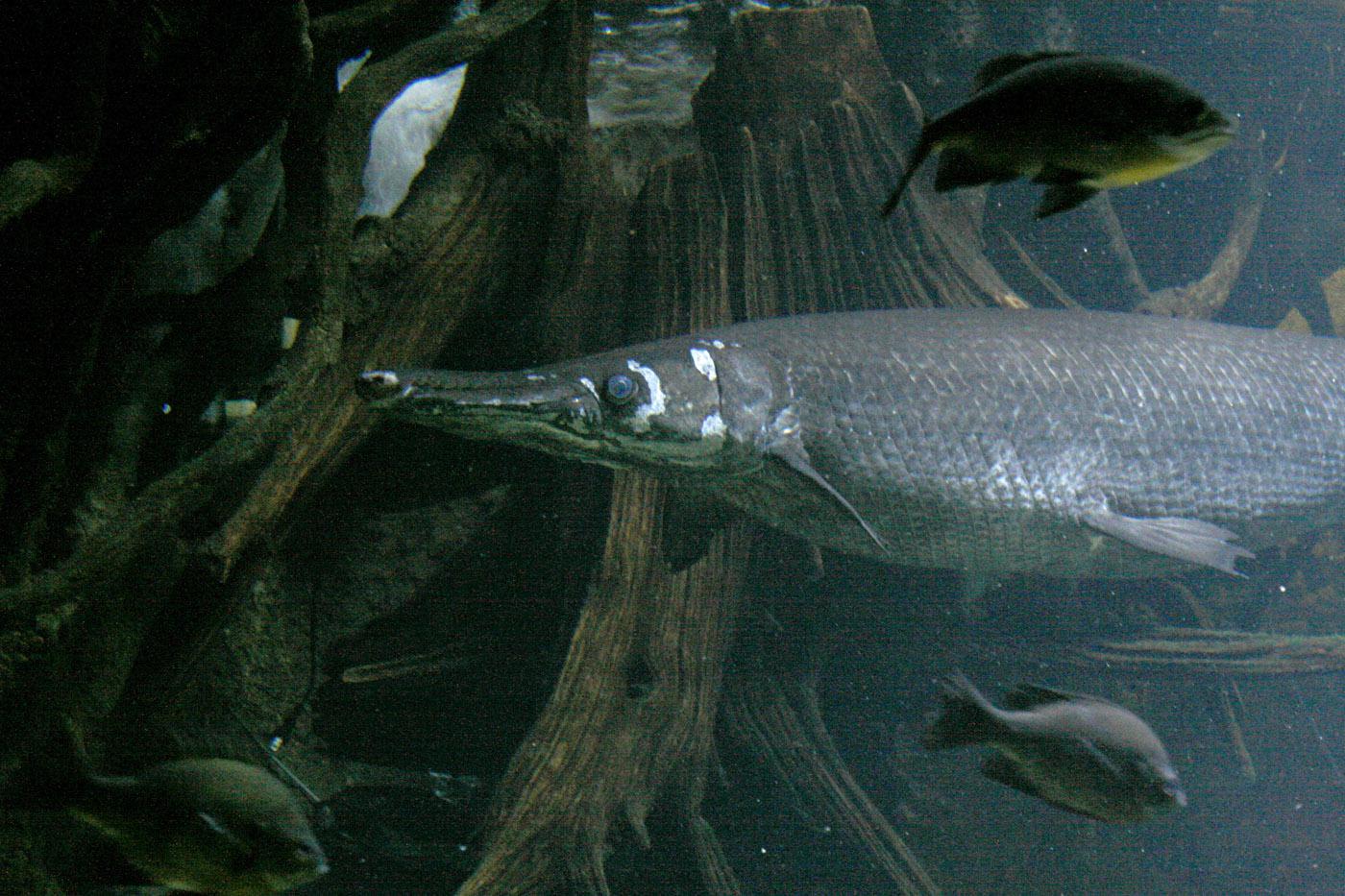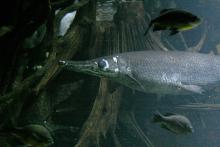Information Possibly Outdated
The information presented on this page was originally released on May 27, 2010. It may not be outdated, but please search our site for more current information. If you plan to quote or reference this information in a publication, please check with the Extension specialist or author before proceeding.
MSU studies needs of giant alligator gar
MISSISSIPPI STATE – A fish longer than 7 feet, heavier than 200 pounds and able to survive outside the water for up to two hours sounds like a fictional animal. This fish is the alligator gar, however, and researchers at Mississippi State University are working to protect it.
The population of the alligator gar is in decline, primarily due to loss of spawning habitat and over-fishing by anglers. Scientists and graduate students in MSU’s College of Forest Resources are hoping to reverse this trend.
“The alligator gar was once thought to eat only game fish, so anglers set out to remove them from slow-moving rivers and reservoirs,” said Daniel Schwarz, a graduate student in the MSU’s Department of Wildlife, Fisheries and Aquaculture. “Now we know that alligator gars are opportunistic feeders and will eat anything from fish to birds.”
This species of gar is one of the largest freshwater fish in North America. It gets its name from the two rows of sharp upper teeth in its long snout, which make this gar look like an alligator. Once common from Illinois to the Gulf of Mexico, the monstrous fish is now concentrated only in the Southeastern United States.
While scientists understand the feeding habits of these fish, they know little about their habitat. The U.S. Fish and Wildlife Service is currently tagging alligator gar with acoustic transmitters to determine their preferred habitat.
“We have limited data on alligator gar and need research to identify their baseline habitat,” said Ricky Campbell, hatchery manager at the Private John Allen National Fish Hatchery in Tupelo.
While the government agency is tracking the gar in its natural habitat, Schwarz will work with the fish at the university’s South Farm aquatic facility. He will use an experimental system of large, drainable tanks that simulate real-life conditions but easily allow manipulation. He is trying to determine the saltwater needs of this elusive, aquatic vertebrate.
“I will expose alligator gar at two different ages to different levels of salinity to determine the effects on their growth,” Schwarz said.
The alligator gars will be kept in each treatment for 30 days.
“We will take numerous measurements, including their weights at the beginning and end of the 30-day period, food conversion ratio, drinking rate, and the concentration of salts in the fish,” Schwarz said.
Peter Allen, an assistant professor in MSU’s Forest and Wildlife Research Center, said researchers need to know when the fish can enter saltwater and what benefits they receive from living in that environment. This physiological understanding can help researchers develop recommendations for better management of the species.
“Understanding the physiological limitations of a species will provide tools that will help us create management practices for a species that is uncommon and relatively difficult to study,” Allen said.
Studying the fish in a laboratory is somewhat unconventional. Most studies examine the species in its natural habitat of rivers and reservoirs.
“The alligator gar is difficult to find in the wild,” Allen said. “By using the facilities on South Farm, we save significant amounts of time because we don’t have to search for suitable fish to study. We can also measure responses to water quality and habitat conditions, which would be difficult or impossible in the field.”
The knowledge gained from the study will improve management practices for protecting this species of gar.
“Our study, coupled with the study by the U.S. Fish and Wildlife Service, will provide the knowledge necessary to understand the alligator gar’s habitat,” Allen said.




